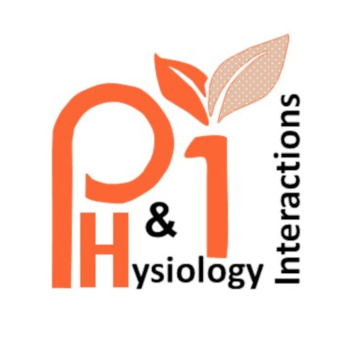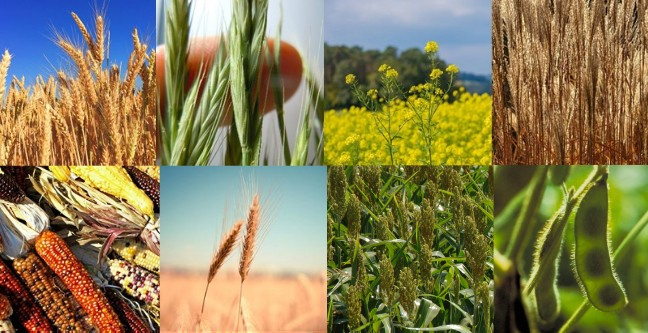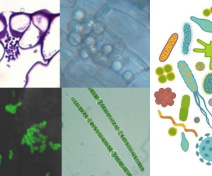PHI researchers aim to gain a better understanding of plant physiology in interaction with their biotic and abiotic environment, in order to identify genetic and agronomic levers for crops that are more robust in the face of climate change.
Biological Question
The PHI department is active in four different fields:
1. Nutritional signaling to identify the molecular players involved in plant response to environmental changes.
2. Metabolic adaptation to fluctuating environments, through the analysis of plant diversity, to understand the fundamental processes governing carbon and nitrogen metabolism, as well as nutritional recycling in plants.
3. The impact of the environment on plant-microorganism interactions.
4. The effect of beneficial microorganisms and biostimulants on plant growth and yield, to provide new solutions for low-input agriculture.
5. Understanding the genetic factors governing plant biomass quality in order to identify new targets for improving animal feed and plant tolerance to abiotic stresses.
Models, tools and methods
The PHI department uses:
1. A large number of plant models, among which Arabidopsis, maize, Brachypodium, rapeseed, sugar beet, miscanthus, soybean, tomato, barley, sorghum, foxtail millet and wheat.
2. Several microbial models, among which the necrotrophic fungus Botrytis cinerea, the necrotrophic bacterium Erwinia amylovora, the arbuscular mycorrhizal fungus Rhizophagus irregularis, symbiotic and non-symbiotic nitrogen-fixing bacteria of the genera Bradyrhizobium, Sinorhizobium and Azospirillum, and cyanobacteria of the genera Gloeothece and Cynaothece, as well as root and leaf microbiota.
3. A wide range of tools and approaches applied to different organs and scales of plant organization:
> phenotyping in controlled environments or in open fields
> phenotyping from the cell to the whole plant
> direct and reverse genetics
> quantitative genetics
> molecular physiology
> systems biology
Societal and economical impacts
The PHI department is at the center of the major challenges posed by increasing food requirements (quantity and quality), reduced inputs and the fight against diseases in the complex context of climate change. To address these challenges, PHI teams are leaders and partners of innovative projects with other research institutes, industrial players and technical institutes, including:
> 2024-GREENSCALE: Towards resilient ecosystems: improving nitrogen and carbon use in agriculture – PEPR FairCarboN (Consortium INRAE, CNRS, CEA and ARVALIS).
2023-PIA4 SOYSTAINABLE: Towards a local and responsible soy protein source for human consumption that is resilient to climate change (Consortium INRAE, CNRS, Universités de Caen Normandie et Paris Saclay, TERRES INOVIA, Ecole d'ingénieurs, Ecole Polytechnique UniLaSalle, Les Jardins de l'Opéra, RAGT R2N, De Sangosse, LIDEA France).
> 2023-FillingGaps: Biomass at all scales to understand its properties – PEPR B-Best (Consortium INRAE, IFP Energies Nouvelles, Synchrotron SOLEIL, Institut National Polytechnique de Toulouse, INRIA and CNRS).
> 2023-AMFERT: Improving nitrogen fertilization in a context of sustainable development (FERTINAGRO Company)
> 2022-Plant2Pro CHAMPAGNE: Study of parietal changes induced by mycorrhization to improve corn digestibility under low input conditions (Consortium IJPB and LIPME).
> 2021-RAAPP: Evaluation of the stimulating role of amino acids and small peptides on agronomic performance (NOVAEM company).
The PHI department is active in four different fields:
1. Nutritional signaling to identify the molecular players involved in plant response to environmental changes.
2. Metabolic adaptation to fluctuating environments, through the analysis of plant diversity, to understand the fundamental processes governing carbon and nitrogen metabolism, as well as nutritional recycling in plants.
3. The impact of the environment on plant-microorganism interactions.
4. The effect of beneficial microorganisms and biostimulants on plant growth and yield, to provide new solutions for low-input agriculture.
5. Understanding the genetic factors governing plant biomass quality in order to identify new targets for improving animal feed and plant tolerance to abiotic stresses.
Models, tools and methods
The PHI department uses:
1. A large number of plant models, among which Arabidopsis, maize, Brachypodium, rapeseed, sugar beet, miscanthus, soybean, tomato, barley, sorghum, foxtail millet and wheat.
2. Several microbial models, among which the necrotrophic fungus Botrytis cinerea, the necrotrophic bacterium Erwinia amylovora, the arbuscular mycorrhizal fungus Rhizophagus irregularis, symbiotic and non-symbiotic nitrogen-fixing bacteria of the genera Bradyrhizobium, Sinorhizobium and Azospirillum, and cyanobacteria of the genera Gloeothece and Cynaothece, as well as root and leaf microbiota.
3. A wide range of tools and approaches applied to different organs and scales of plant organization:
> phenotyping in controlled environments or in open fields
> phenotyping from the cell to the whole plant
> direct and reverse genetics
> quantitative genetics
> molecular physiology
> systems biology
Societal and economical impacts
The PHI department is at the center of the major challenges posed by increasing food requirements (quantity and quality), reduced inputs and the fight against diseases in the complex context of climate change. To address these challenges, PHI teams are leaders and partners of innovative projects with other research institutes, industrial players and technical institutes, including:
> 2024-GREENSCALE: Towards resilient ecosystems: improving nitrogen and carbon use in agriculture – PEPR FairCarboN (Consortium INRAE, CNRS, CEA and ARVALIS).
2023-PIA4 SOYSTAINABLE: Towards a local and responsible soy protein source for human consumption that is resilient to climate change (Consortium INRAE, CNRS, Universités de Caen Normandie et Paris Saclay, TERRES INOVIA, Ecole d'ingénieurs, Ecole Polytechnique UniLaSalle, Les Jardins de l'Opéra, RAGT R2N, De Sangosse, LIDEA France).
> 2023-FillingGaps: Biomass at all scales to understand its properties – PEPR B-Best (Consortium INRAE, IFP Energies Nouvelles, Synchrotron SOLEIL, Institut National Polytechnique de Toulouse, INRIA and CNRS).
> 2023-AMFERT: Improving nitrogen fertilization in a context of sustainable development (FERTINAGRO Company)
> 2022-Plant2Pro CHAMPAGNE: Study of parietal changes induced by mycorrhization to improve corn digestibility under low input conditions (Consortium IJPB and LIPME).
> 2021-RAAPP: Evaluation of the stimulating role of amino acids and small peptides on agronomic performance (NOVAEM company).

Department head:
Rozenn Le Hir
Thomas Girin
Rozenn Le Hir
Thomas Girin

